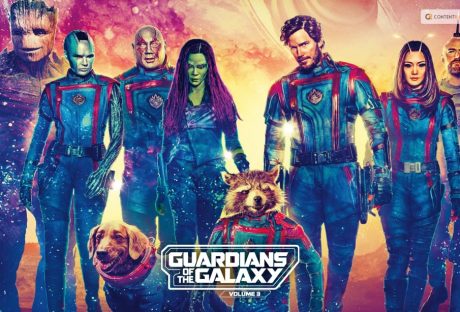The cosmos of Star Trek is not merely a cinematic backdrop; it’s an intergalactic narrative of exploration, humanity, and unparalleled imagination that has voyaged beyond the final frontier for over five decades.
For those who don’t just watch Star Trek but relish every phasor blast and warp-speed jump, join us as we traverse through five warp-worthy facts that will engage, amaze, and affirm your love for the Starfleet saga! Let us try to find the horizon of the Star Trek universe.
Fact 1: The Origin And Evolution Of The Vulcan Salute
Boldly Going with Salutations
The iconic gesture of the Vulcan salute, with its fingers split in the sign of peace, embodies a universe of harmony and difference. What’s enthralling about this humble yet powerful salute is its real-world genesis: Leonard Nimoy’s innate artistic eye.
Carrying a Jewish language and culture and a gesture from the synagogue, Nimoy was successful in evoking a personal touch to his extraterrestrial character, Spock.
The Vulcan salute, often accompanied by the phrase “Live Long and Prosper,” became not just a symbol of the Vulcan people but a beacon of hope across cultures, religions, and Earth. With Nimoy’s contribution to Trek lore, he remained, quite fittingly, an innovator who truly lived long and prospered in our hearts.
Fact 2: The Klingon Language: A Linguistic Phenomenon
Conversations In The Undiscovered Tongue
While many approached the Klingon culture with caution, linguistic virtuoso Marc Okrand boldly went where no linguist had gone before.
However, charged with creating a guttural, complex language for a warrior race, Okrand transformed mere utterances into a full-fledged lexicon.
Klingon has evolved from lines in a script into a living language. The Klingon Language Institute stands as a testament to the devout, a community dedicated to speaking and flourishing in the language of honor. It’s a feature of the Star Trek universe.
Moreover, Okrand revolutionized the art of language creation by providing fans the tools to converse in the most honorable way, proving that even the most barbaric growls can articulate beauty, order, and legacy.
Fact 3: The Episode That Never Was: “He Walked Among Us”
A Lost Chapter In Constellation

There’s an intriguing blip in the Star Trek narrative: an episode that, like a shooting star, was imagined but never captured.
“He Walked Among Us” was to feature the crew discovering a godlike being accidentally left on Earth, a hugely ambitious premise that had the misfortune of colliding with production dilemmas and creative differences.
This never-aired tale, shrouded in mystery and potential, leaves fans wondering how this formidable figure would have shaped Star Trek lore. However, the Star Trek universe is a reminder that even in the domain of the future, not every vision can find a place in the heavens, but that makes those that do all the more brilliant.
Fact 4: Star Trek Continues: Keeping The Legacy Alive
Handing Over The Warp Baton
When the stars of Star Trek passed by, they left a void, one that a dedicated crew of fans endeavored to fill with the web series Star Trek Continues, starring Vic Mignogna as Captain Kirk.
The series didn’t just continue the stories of Kirk, Spock, and McCoy; it offered fans closure to narratives that broadcasting swept away prematurely.
Continues received praise not only for its respect for the original series but for the craftsmanship evident in every frame. Moreover, with its conclusion, the torch of storytelling warmed by the Enterprise’s engines was passed – proving that through fan fiction, the universe truly lives long and prospers.
Fact 5: Star Trek’s Influence on Technology
When Science Fact Becomes Science Fiction’s Fact
Star Trek didn’t just predict technological advancements; it inspired them. Devices like the communicator and the personal access display device (PADD) from the show have leaped from imagination to our hands, paving the way for innovations. Even the medical tricorder has seen development towards a real counterpart.
More than just a ship, The U.S.S. Enterprise has guided creators in crafting technologies that now define our modern world.
Renowned scientists and engineers have attested to the series shaping their endeavors, illustrating that Star Trek has not only transmitted stories but jumpstarted our progress into uncharted scientific horizons.
However, for five decades and counting, Star Trek has unfailingly captivated its audience with a vision of the future built upon universal values, detailed world-building, and a profound respect for the human experience.
Navigating through these five facts about the franchise is much like a starship’s mission; it’s not just about discovery and exploration but also about the human endeavor to create, communicate, continue, influence, and ultimately boldly go.
Remarkable Star Trek Universe Productions, 1979
The Star Trek universe movies have their cinematic flow and movement. Moreover, the franchise followed its crafts and evolved in its work. Ultimately, they have carved out their name and fame. However, let us form an understanding of the great productions that they created.
Start Trek: The Motion Pictures
This film showcased the different voyages of the U.S.S. enterprises. It is an energy cloud that is making its way towards the Earth and obliterating everything in its path. The story garnered huge respect from the viewers, notwithstanding the slow pace. But the 70s production was a success for sure.
Star Trek 2: The Wrath Of Khan, 1982
William Shatner and Ricardo Montalban’s starrer movie was quite a success. Being a sequel to the events of the “Space Seed” episode, the movie hit the viewers’ hearts. Along with an arresting story, the acting and delivery of the actors earned a lot of praise from the audience.
Star Trek 3: The Search For Spock, 1984
The Spock might have taken its last breath time in the previous movie, The Wrath Of Khan, but the third movie set up the ground for his return. The film has a mixed response, but there was no dearth of effort.
The actors did a fantastic job, but the story and progression failed to catch the audience’s attention. The movie notwithstanding, failure at the box office earned the praises of the critics, which is one of the attainments of any form of art.
Start Tech 4: The Voyage Home, 1986
This is an interesting production—a funny film whose mission is not destruction but creation. It is, however, a revival from the devastating effect of humans’ shortsightedness.
The movie projects that a probe descends on the Earth, looking for a response. The response was received from the long-tailed blue whales.
Yes, the extraterrestrial ambiance created by the geography lessons (whales inhabited the Earth before men) highly aroused people’s interest. Ultimately, the fun movie attained huge success at the box office.
Okay, fine. We have discussed some of the Star Trek Universe movies, of bygone days. Now, let us discuss some of the great Star Tech movies from the present.
Star Tech, 2009
The stars who showed their screen presence in the movie were Chris Pine, Zachary Quinto, and Karl Urban.
The plot of the movie was nothing special… it was quite a straightforward affair. A Romulan, Nero, was making efforts to obliterate the Earth. His anger for Earth was the result of boiling grief. Nevertheless, it is one such Super Tech movie of the present times that earned quite a healthy reputation.
Star Trek Into Darkness, 2013
The main cast of the movie were Zachary Quinto, Chris Pine, and Benedict Cumberbatch. This movie was also among the most successful versions. With a twisted but interesting story and cinematic effects, the production turned out to be a huge success.
The last production in this list is Star Trek Beyond, which also accumulated financial success and successfully carried with it the bottom of the previous productions.
Conclusion
In the end, Star Trek isn’t just a story of the future; it’s a tale of the unending human potential as expansive as the cosmos itself. Join us, fellow Trekkies, as we stand on the precipice of further adventures, real and imagined, where the final mantra of the franchise calls us, “This is the voyage that never ends.”
Additional Reading:





















